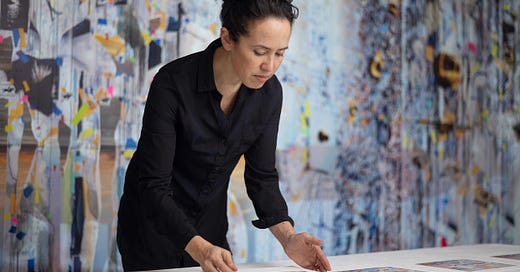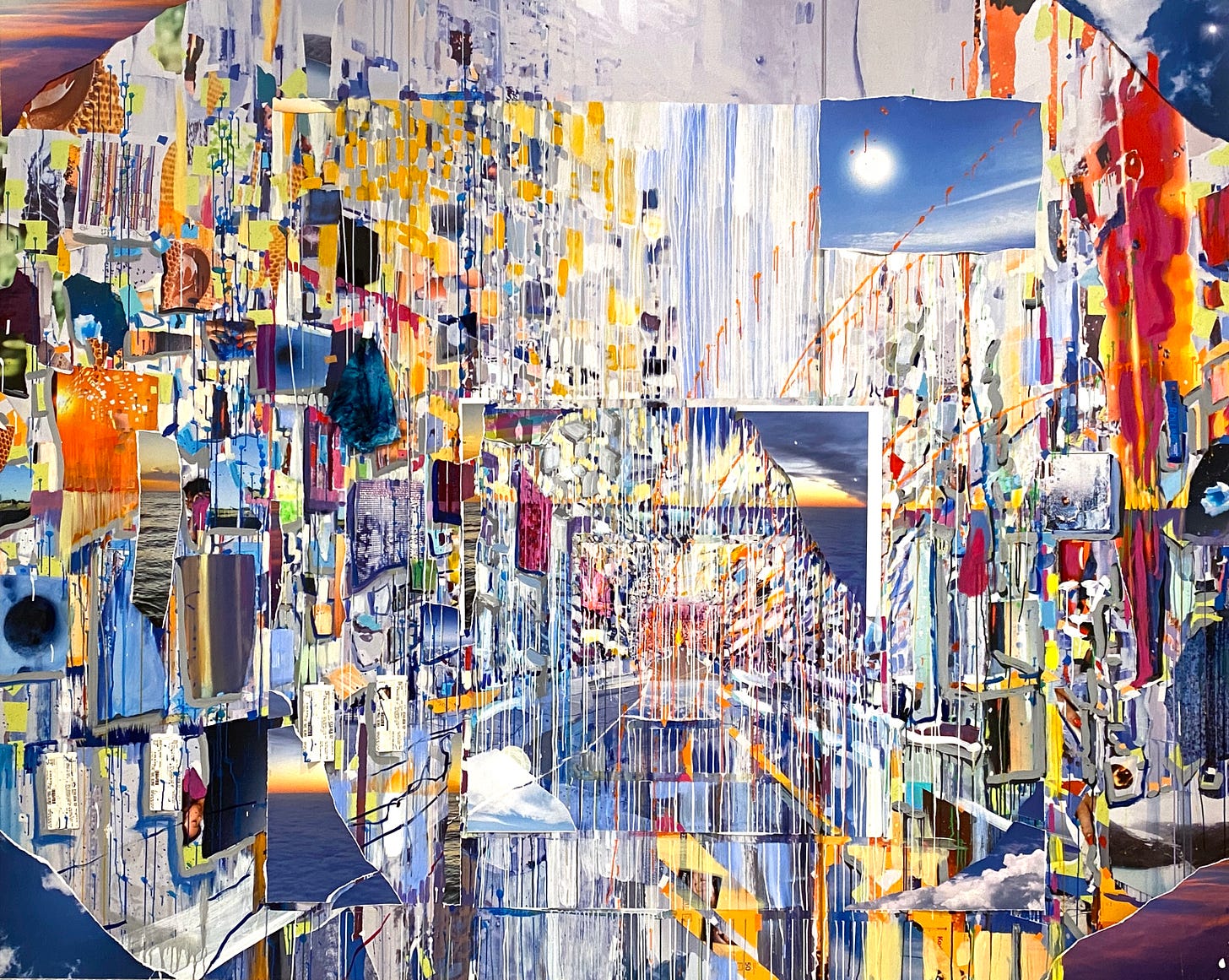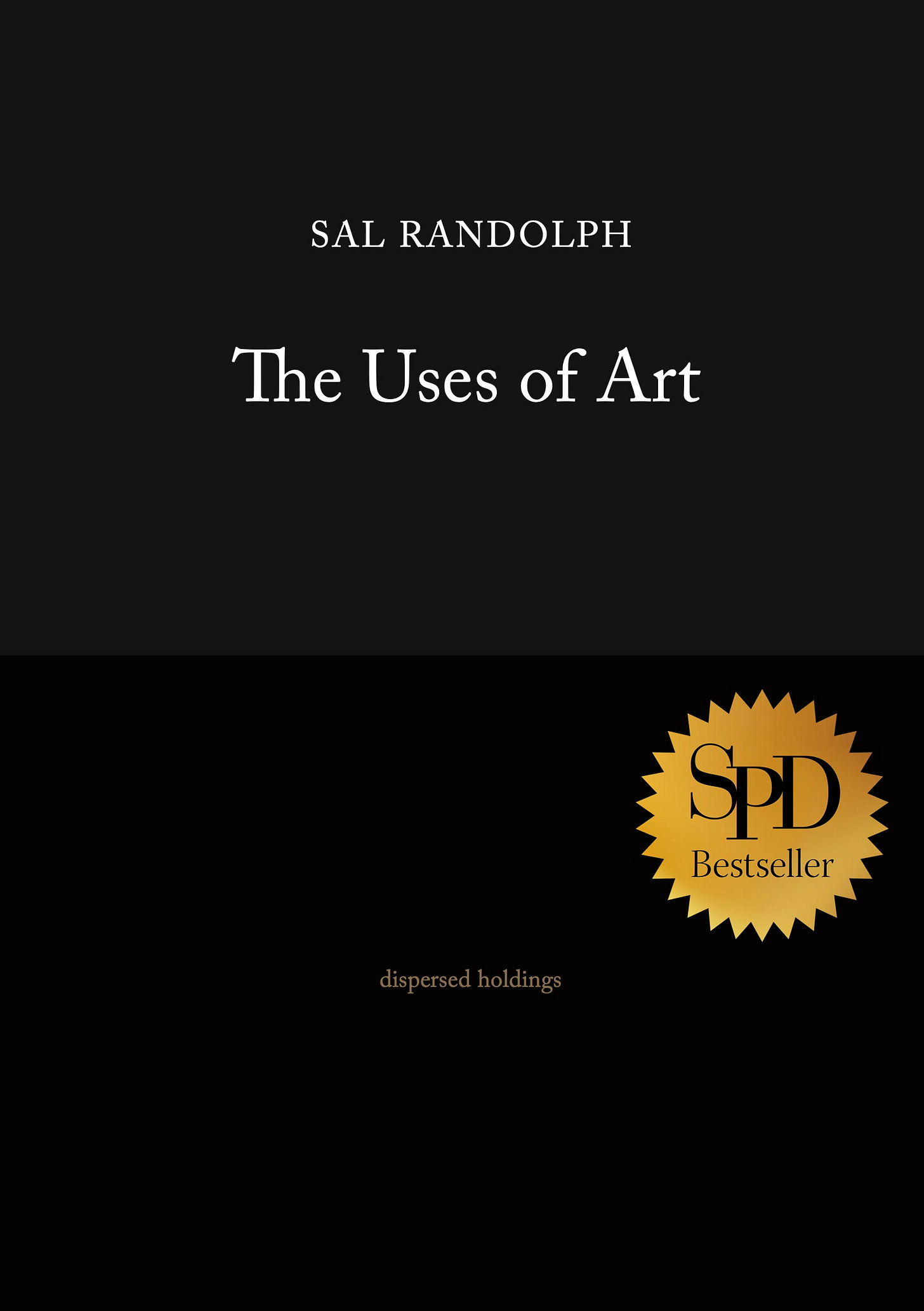Dear Friends,
I’ve followed Sarah Sze since I came across an early catalog of her work almost 20 years ago. Right now there is a generous selection of her installations and paintings on view in the upper reaches of the Guggenheim’s spiral (along with an amazing show by the late Venezuelan artist, Gego). I’ve spent some time with the exhibition, and am planning to go again—so, more on that in the future. Meanwhile, I came across a painting of hers on a recent trip to Seattle, and it became the basis of another experiment in exploring how works of art live in our memory.
—Sal
Seattle
I was in Seattle in April, and spent an afternoon at the Seattle Museum of Art. The first thing that snagged my eye as I walked into the museum’s galleries was a Sarah Sze painting, one clearly in close conversation with the paintings that are currently part of her show at the Guggenheim.
The work of Sze’s I have the least traction with is her painting, so seeing this one on its own, un-surrounded by the sculpture, seemed like an opportunity. I glanced at it, and then left it for the end of my visit. By the time I returned to it, a couple of hours later, a lot had happened to me. I had seen manuscript fragments of the Diamond Sutra and the Lotus Sutra from the legendary Dunhuang caves. I had sat for a half hour or so looking at paintings by the artists of Papunya Tula in Australia’s western desert and watching a documentary film of older women talking about their work and their relation to their land. All through my time in the museum, the Sarah Sze had stayed in my mind, luminous and beckoning. It was a relief to give it my full attention and to let something unfold between the painting and me.
When I was back in my hotel room, I conjured the painting in memory and tried to write it. Two months later, in New York, I did the same thing. The painting is called Double Take, so it perhaps fitting to see what happened in the remembering, and the remembering again.
Sarah Sze, Double Take — April
It is simultaneously a serene pale blue monochrome and an incredibly busy layered field of paint and torn photographs. There’s something about the pale aqua blue that sings out. There’s plenty of orange too, sunset orange, paint splatter orange. The orange and blue shimmer against each other in a way that is pretty some moments and deeply disorienting in others. The painting is big, and hung low. When you step up to it, it occupies your whole attentional field. The phrase ‘attention span’ used to mean something spatial rather than temporal. At the visual center is a rectangle within a rectangle where everything converges. It’s as if you’re looking down a city street, but no actual street presents itself. Nevertheless there are radiating lines of perspective. As if in a drawing exercise: a mapping out of depth and space through lines that shoot both outward and inward. There is no part of the surface that is not intricately covered with competing layers. The canvas or board itself has different levels blocked out, and then torn paper, mostly photographic print-outs. I remember the paint as mostly splotches, flung on at significant velocity, but I also feel sure there was a brush involved somewhere. Many colors act as minor characters playing against the blue and orange. A sunset and the sky.
Sarah Sze, Double Take — June
I do not wish to observe anything closely, even in memory. I can only see it in glances. A bright, blinding, sky-pale aqua radiating out. Surely it’s a city, a city I inhabit or remember. Surely it’s an impossible and contradictory sunset, as if sunset could happen at noon. The sun comes down, aligned with Manhattan streets, as it does twice yearly. At the same time it is scattered, a sun-explosion of fragments. I know there are layers of paint and layers of photographs. I image there are photographs of paint, and paint that recreates the images from photographs. I am angry at the act of depiction and angry at the act of writing. There is a too-muchness to this painting and I cannot resolve it. It pulls you in and whirls you out. I wonder if a painting can be like an anthology you create for yourself, an anthology of perception, dream, memory. I wonder if a painting can spend too little time with its own mind and too much time with the world. I wonder if the unresolvability I feel is an unresolvability within the painter, within the painting, or within myself.
Sarah Sze’s exhibition Timelapse is on view at the Guggenheim Museum through September 10, 2023.
Big thanks to Tara Penry of PeaceLinks for making some great connections between last week’s “Ways of Seeing” post and broader issues of politics and polarization as articulated by Elizabeth Beggins in Chicken Scratches. Check out Peacelinks here (includes a bonus poem about Monet’s vision!):
Further adventures and new ways of seeing can be found in my book, The Uses of Art.
Artist Sal Randolph’s THE USES OF ART is a memoir of transformative encounters with works of art, inviting readers into new methods of looking that are both liberating and emboldening.
Dazzlingly original, ferociously intelligent.
— Michael Cunningham
A joyful, dazzling treasure-box of a book.
— Bonnie Friedman
Here’s a guide, to waking up, over and over again.
— Roshi Pat Enkyo O’Hara









What a great painting! Thanks for showing it...
You write, “I wonder if the unresolvability I feel is an unresolvability within the painter, within the painting, or within myself.” As you say, it is uncomfortable when we’re reminded of our shifting selves...